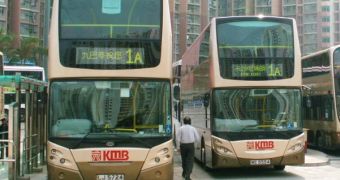Generally, bus drivers covering city routes are very apt at their profession, and deliver passengers safely to their destinations. Accidents occur mostly when other drivers plunge into their vehicles. The same is not necessarily true for drivers covering international bus trips, who spend long hours on the road. One of the most devastating types of accidents that can take place is a rollover. In such an instance, the way the machine's body structure deforms and behaves dynamically could mean the difference between life and death. New research is now focused precisely on this issue.
According to AlphaGalileo, experts at the UC3M Instituto de Seguridad de los Vehículos Automoviles (Automobile Safety Institute) (ISVA), in Spain, are taking giant steps forward in understanding this type of materials science, and in applying their knowledge for the common good. Thus far, the team identified vibrations as one of the most important factors dictating the faith of a bus' structure, in case of an accident. The team has therefore already managed to elaborate a mathematical model, which it plans to use to estimate the frequency of vibrations that are most often produced during rollovers.
The group takes great pride in its work, especially because its model is fairly straightforward. “There are other numerical techniques such as the finite element method, to determine the vibration’s own frequency, but this model allows it to be done in a faster and simpler fashion. In some vehicles headlights that break because they are not rigid enough have been observed,” one of the authors for the new research, UC3M Mechanical Engineering Department expert Antonio Gauchia, explains.
“Moreover, it has been observed that this factor is particularly relevant in the increase of the rollover threshold, and that, as such, results in greater vehicle safety. Several factors are involved in obtaining a resistant rigid torsion structure, such as the dimensions of the cross-section of the profiles that make up the structure, the material of the profiles and the availability of the same in the bus structure,” he continues. The team is basically not trying to construct bigger, heavier, more robust buses. They want to improve on existing designs by taking into account factors such as weight, consumption, torsional rigidity, and so on.
“This research study, as well as others that we are carrying out along these same lines, have direct application in the bus sector, since they not only improve safety but also evolve from the idea of an oversized structure to a body structure somewhat smaller in design,” study author and ISVA Director Vicente Díaz, who is also a UC3M full professor, concludes. Details of the team's work appear in the latest issue of the International Journal of Heavy Vehicle Systems.

 14 DAY TRIAL //
14 DAY TRIAL //